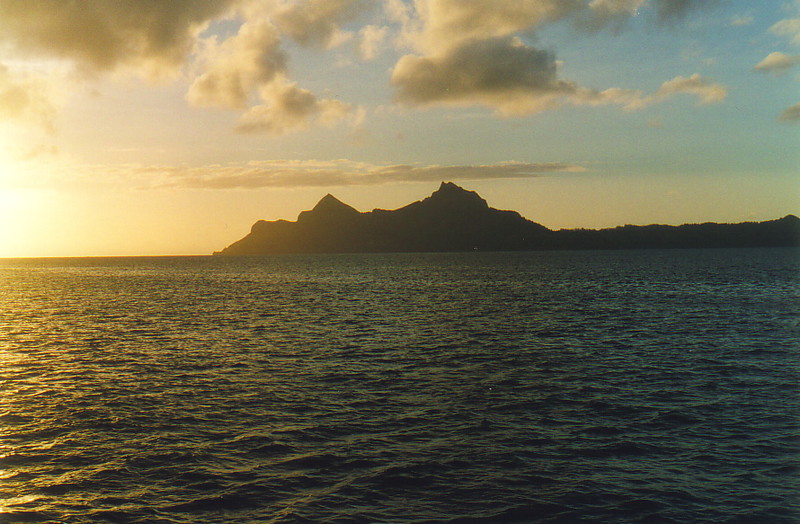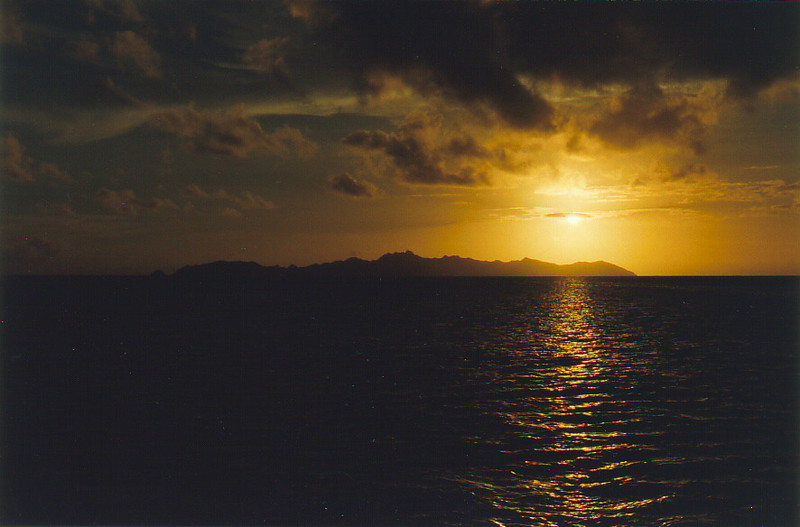
The Gambier Islands are part of French Polynesia, the French-controlled area of paradise that comprises the following:
-
The Society Islands, which include Tahiti and Bora Bora and most of the tourism in French Polynesia.
-
The Marquesas Islands, a collection of 12 islands some distance to the northeast of the Society Islands and north of the Tuamotus.
-
The Austral Archipelago, seven islands lying due south of the Society Islands, and home to the southern islands in French Polynesia.
-
The Tuamotu Archipelago, the biggest of the five archipelagos, which stretches in a 1000-mile line southeast from Tahiti and contains Hao, Makemo, Amanu and Mururoa among the 76 Tuamotuan islands.
-
The Gambier Archipelago at the southeastern tip of Polynesia. This archipelago is made up of the main Gambier lagoon, plus the Actéon (or Actaeon) group of islands and the atolls of Marutea Sud, Maria and Morane. The Gambier lagoon comprises four main islands (Mangareva, Taravai, Akamaru and Aukena) and ten smaller islands or motus (including Agakauitai, and the coral motu of Totegegie, home to the airport).
The Gambier lagoon is a classic atoll surrounding the inner Gambier Islands. An atoll (pronounced 'ah-toll', not 'ay-toll') is one of the archetypal natural phenomena in the Pacific, and is responsible for beautiful coral reef, motus and protected anchorages galore. The islands of the southwest Pacific are all volcanic in origin, being formed by the clash of the Pacific, Indian, Eurasian and Philippines tectonic plates; the clashes force magma up into the sea, which creates islands in the ocean, and with the perpetual drift of the plates, this has formed a string of islands from Pitcairn Island and the Gambiers in the east, to Indonesia in the west and Japan in the north.
As the volcanoes form, they cool and harden to form islands, and over time the islands are slowly eroded away by the sea, and this process gives rise to the atoll; coral forms around the islands, and as these islands erode and disappear the coral remains, leaving large strung-out rings of coral reefs, sometimes containing islands (as in the Gambiers). The resultant lagoons inside coral atolls are placid and full of life, and assuming there's an entrance into the lagoon (which is not that common), the anchorage is wonderfully sheltered from the ocean swell. A motu (pronounced 'mow-too') is an island formed by debris and sand collecting on top of an atoll reef, and normally consists of a thin strip of sand, a few coconut palms, and wonderful diving opportunities. The Tuamotus are mainly atolls, and as such they're beautiful but a pain to navigate because atolls aren't visible until you're very close; then again, that's part of their charm.
The Gambiers are in the remotest part of French Polynesia, some 1643km from Tahiti; if you head east from the Gambiers you will come across Pitcairn Island (owned by the British, at the continuing behest of the inhabitants), Easter Island (which is Chilean), and then after a long, long stretch of ocean you reach South America. The biggest of the Gambiers at 14km2 is Île Mangareva, which contains the capital of the Gambiers, Rikitea. That's not a large area when you consider how remote these islands are and that the total land area of the archipelago is a mere 35km2...

The first people to visit the Gambiers probably came from the Marquesas around 1200 AD. The remains of houses and burial grounds have been found on the smaller islands, but some of the more interesting archaeological remains were destroyed in the euphoric insanity of the Jesuit mission that arrived in the 19th century. Before then, the first European to arrive in the Gambiers was Captain John Wilson of the London Missionary Society, who explored the islands in 1797 aboard HMS Duff, naming the islands after Captain Gambier, a Frenchman who had supported his expedition.
But it was the French evangelists who had the biggest impact on these remote islands. The record of Honoré Laval, the Jesuit priest who came to the Gambiers in 1834 with Father François Caret and Friar Columban Murphy in tow, is shameful and, unfortunately, typical. After converting and completely dominating Maputeoa, the last king, Laval ruled the islands as a despot. He set stringent rules (called the Mangarevan Code) and started a huge building programme in which he forced the people to erect more than 116 coral stone churches, convents, mills and other buildings, some of which are strewn all over Mangareva as ruins, and some of which are still standing and cared for, like the monstrously large cathedral in Rikitea. In the process Laval caused the death of over 5000 people, eliminating the will of the people to survive, and destroying an entire culture. The cathedral and ruins stand as monuments to his egomania, yet the inscription on the statue donated by France reads, 'His memory is blessed in these islands.' Laval's rule came to an end when Tahiti was declared a French protectorate in 1871; today, only a few pure blood Mangarevans are left, and there certainly aren't many people blessing Laval's memory.
Rikitea is an interesting mixture of tropical primitiveness and modern influence. The islands are full of lush vegetation, with fruit trees everywhere that provide more fruit than the population can eat; the result is a paradise where you can walk around picking fruit whenever you want it, or even plucking one of the plentiful fishes or lobsters from the sea. On the other hand, the shops sell canned fruit, canned fish and other western delicacies like Coca Cola and ice cream, and the islanders find it easier to buy cans than catch their own meals. It's a bizarre turnaround when you consider how westerners think of cans as a poor substitute for fresh produce.
There are other problems too. The lobsters and fish inside the lagoon are not fit to eat for two reasons: there's a nasty red algae that originates in the vicinity of L'Île des Lapins, and then there's the bacterial contamination from raw sewage released off Île Mangareva. The locals told me that their lobsters were bad to eat because of the nuclear tests in nearby Mururoa; they said that the French had washed their contaminated ships down inside the atoll and had poisoned the fish. However this, like much of the local gossip relating to the nuclear tests, is just a myth; in fact the 1995 tests in Mururoa were performed underground in sealed chambers and no external contamination was possible, and in 1996 a test by the International Commission found no contamination in the Gambiers. The only two instances of contaminated maritime vessels in the area happened when two rockets were launched through a mushroom cloud in a 1967 experiment to collect samples, but these were decontaminated at Hao in a dedicated facility. Nobody would deny that the 1995 tests were unfortunate given the gradual turn away from nuclear weaponry in the West, but it's easy – and unfair – to blame France for everything just because we can't fathom how anyone could think of performing nuclear tests in such a paradise.
And it is a paradise. The weather is balmy with little rain at this time of year, the local wildlife is exquisite, the water is warm and fresh and away from the settlements it's incredibly clear. The sight of coconut palms fronting an idyllic island beach where nobody goes and sunbathes is enough to make you understand why the locals are so friendly and are always smiling. And as for the little kids... they're a picture of innocence and happiness, which bodes well for the islands' future.